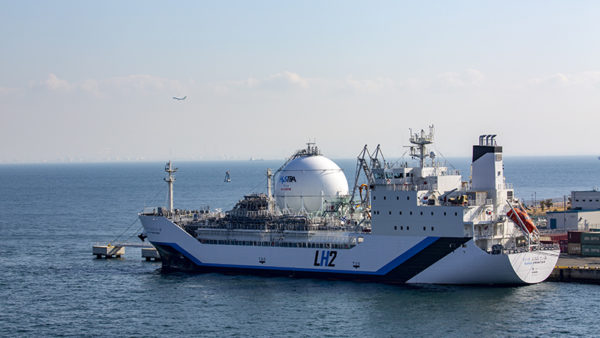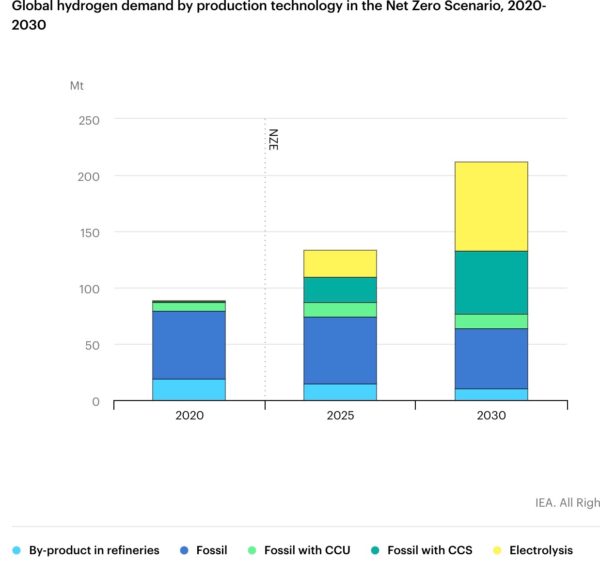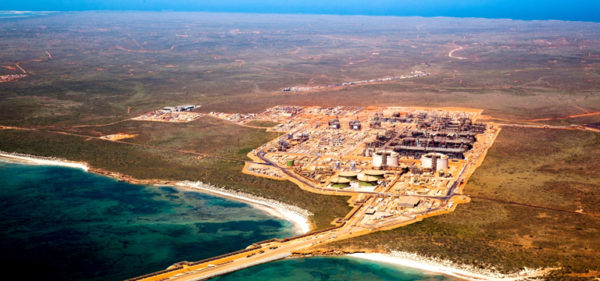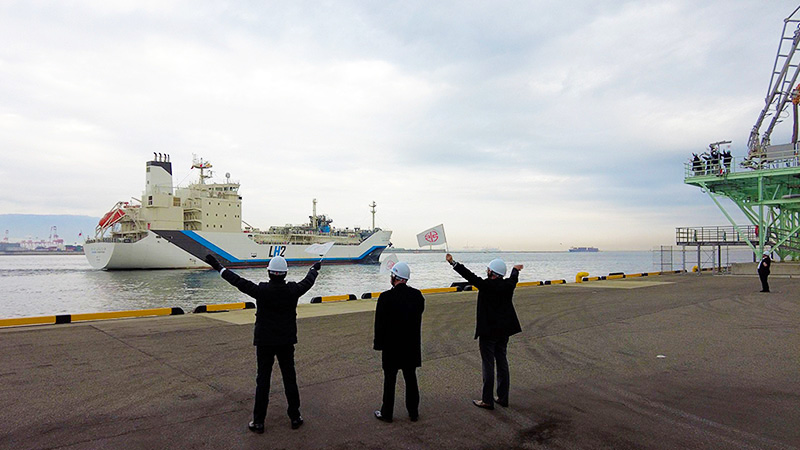Australia is set to become the world's first exporter of liquefied hydrogen (LH2) after the Suiso Frontier docked at Victoria's Port of Hastings this week to carry 1,250 cubic metres of super-cooled (-253°C) liquid hydrogen from the Latrobe Valley to Kobe, Japan.
The arrival of the Suiso Frontier marks the next phase of the $500 million Hydrogen Energy Supply Chain (HESC) pilot project, which will see the specially-built carrier transport liquified hydrogen generated from brown coal, and is led by a consortium including Japan's J-Power and Kawasaki Heavy Industries, along with Shell, AGL and with the support of the Japanese, Australian and Victorian governments.
Despite the product's anachronistic fossil-fuelled origins, the physical transport of liquified hydrogen is a landmark day in the evolving hydrogen market.
Prime Minister Scott Morrison said the HESC project was a world-first that would make Australia a global leader, aiming to produce 225,000 tonnes of clean hydrogen each year in the Latrobe Valley.
Of course, by “clean”, Morrison is referring to the project's carbon capture and storage (CCS) element, which will see the carbon dioxide produced from the use of brown coal captured and stored in the CarbonNet project's offshore reservoir in Gippsland. This “clean” hydrogen is therefore key to Japan's plans to reach “net-zero” emissions by 2050.

“A successful Australian hydrogen industry means lower emissions, greater energy production and more local jobs,” said Morrison. “The HESC project is key to both Australia and Japan and our hydrogen industries… Last year, our countries affirmed our mutual ambitions and desire to work together to advance the development of low emissions technologies when we agreed the Japan-Australia Partnership on Decarbonisation through Technology.”
“The HESC project puts Australia at the forefront of the global energy transition to lower emissions through clean hydrogen,” continued Morrison, “which is a fuel of the future.” On Friday the Morrison Government announced $7.5 million to support the next $184 million pre-commercialisation phase of the HESC, and $20 million for the next stage of the CarbonNet project. Although this funding is contingent on the Japanese and Victorian governments, as well as the HESC partners, providing funding as well.
Australian Minister for Industry, Energy and Emissions Reduction Angus Taylor said the arrival of the Suiso Frontier was an important milestone for Australia's “technology-led” approach to reducing emissions.”
Taylor's Assistant Minister, Tim Wilson, added: “The International Energy Agency (IEA) projects hydrogen demand to double by 2030, and today's arrival of the liquefied hydrogen carrier ushers in a new era of clean energy exports to create new jobs and opportunity for Australians.”

Of course, as the above IEA graph clearly shows, the demand for genuinely “clean” hydrogen produced with renewables via electrolysis will far outstrip the demand for hydrogen generated by fossil fuels and using CCS. And yet the Australian Government is not as keen to support green hydrogen as it is to make misleading statements based on IEA data.
Of course, Australian mining magnate and Fortescue Metals Group Chairman Andrew Forrest remain adamant that green hydrogen is the only “clean” hydrogen. Talking to CNBC Forrest said that energy and climate ministers from all over the world approached him at COP26 to ask him to “tone down” his rhetoric on “grey hydrogen”. Forrest reiterated that he could not tone down his language on grey nor blue hydrogen because their emissions mitigation techniques are “not proven” and we have more than enough renewables to forget fossil fuels entirely.
Indeed, the world's biggest CCS project is Chevron's Gorgon Gas Plant in Western Australia, whiwas last year revealed to have failed to meet its environmental target of capturing 80% of its emissions. According to a report by the ABC the project didn't even get close to its target, with one estimate suggesting the project only managed to capture 30% of the emissions they had promised would be stored.

The Clean Energy Council Chief Executive Kane Thornton also maintains that the only thing CCS has proven to be is “very expensive and challenging to integrate into Australia's ageing coal-fired generation fleet.”
“Australian taxpayers have very little to show for over $1 billion spent so far in support of CCS, and it would be a far better outcome to channel this funding into driving down the coast of renewable hydrogen,” he also said.
Climate Council senior researcher Tim Baxter said the revelations from Chevron's failed CCS project “highlights once again that CCS in the fossil fuel sector is an expensive failure… The result is no surprise. After decades of CCS research and billions of dollars of investment, there is little to show for it. Over the past decade, the costs of renewable energy like wind and solar have plummeted. Over the same period, CCS has remained extremely expensive.”
“There are still no projects operating anywhere in the world that have delivered CCS on time, on budget, or in the quantities promised,” continued Baxter. “CCS is simply an attempt to prolong the life of polluting fossil fuels which are driving climate change. We need to transition away from burning coal, oil and gas and instead power our economy with renewables and storage.”
Fiona Beck, an Australian National University (ANU) Institute for Climate, Energy and Disaster Solutions engineer, told The Guardian that while the physical transport of LH2 is an engineering milestone, the academic pointed to a recent co-authored peer-reviewed paper published in the Journal of Cleaner Production which examined the emissions to be produced by the “clean” Japanese-Australia LH2 supply chain, and found that if the generating LH2 with fossil fuels continued Australia would simply be absorbing Japan's emissions. And that only a fully renewable process reduces emissions for both nations.
Nevertheless, the Morrison Government believes that 225,000 tonnes of its “clean” LH2 will help reduce emissions by approximately 1.8 million tonnes annually.
This content is protected by copyright and may not be reused. If you want to cooperate with us and would like to reuse some of our content, please contact: editors@pv-magazine.com.




2 comments
By submitting this form you agree to pv magazine using your data for the purposes of publishing your comment.
Your personal data will only be disclosed or otherwise transmitted to third parties for the purposes of spam filtering or if this is necessary for technical maintenance of the website. Any other transfer to third parties will not take place unless this is justified on the basis of applicable data protection regulations or if pv magazine is legally obliged to do so.
You may revoke this consent at any time with effect for the future, in which case your personal data will be deleted immediately. Otherwise, your data will be deleted if pv magazine has processed your request or the purpose of data storage is fulfilled.
Further information on data privacy can be found in our Data Protection Policy.